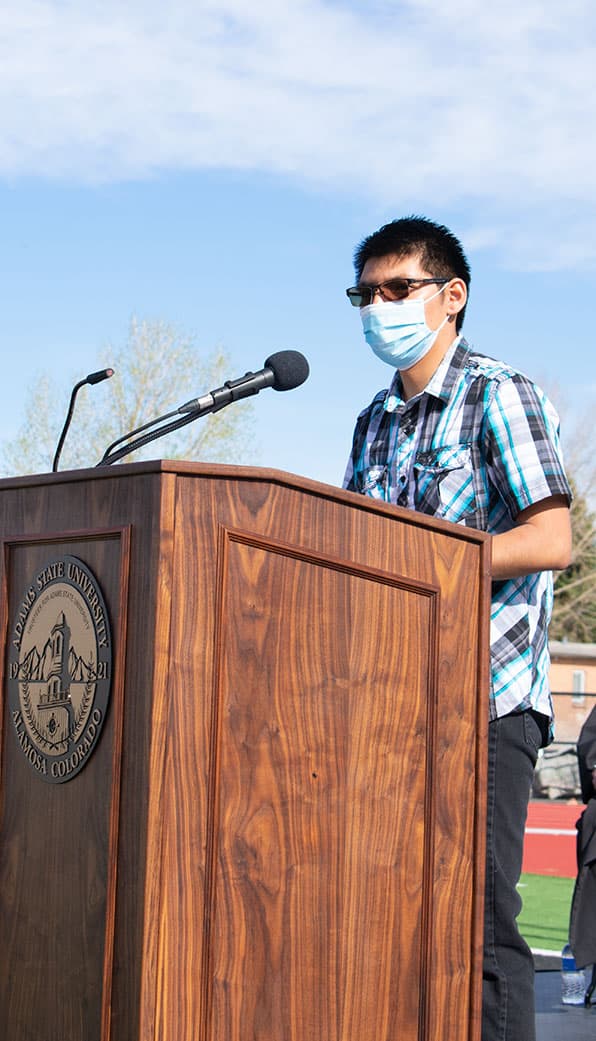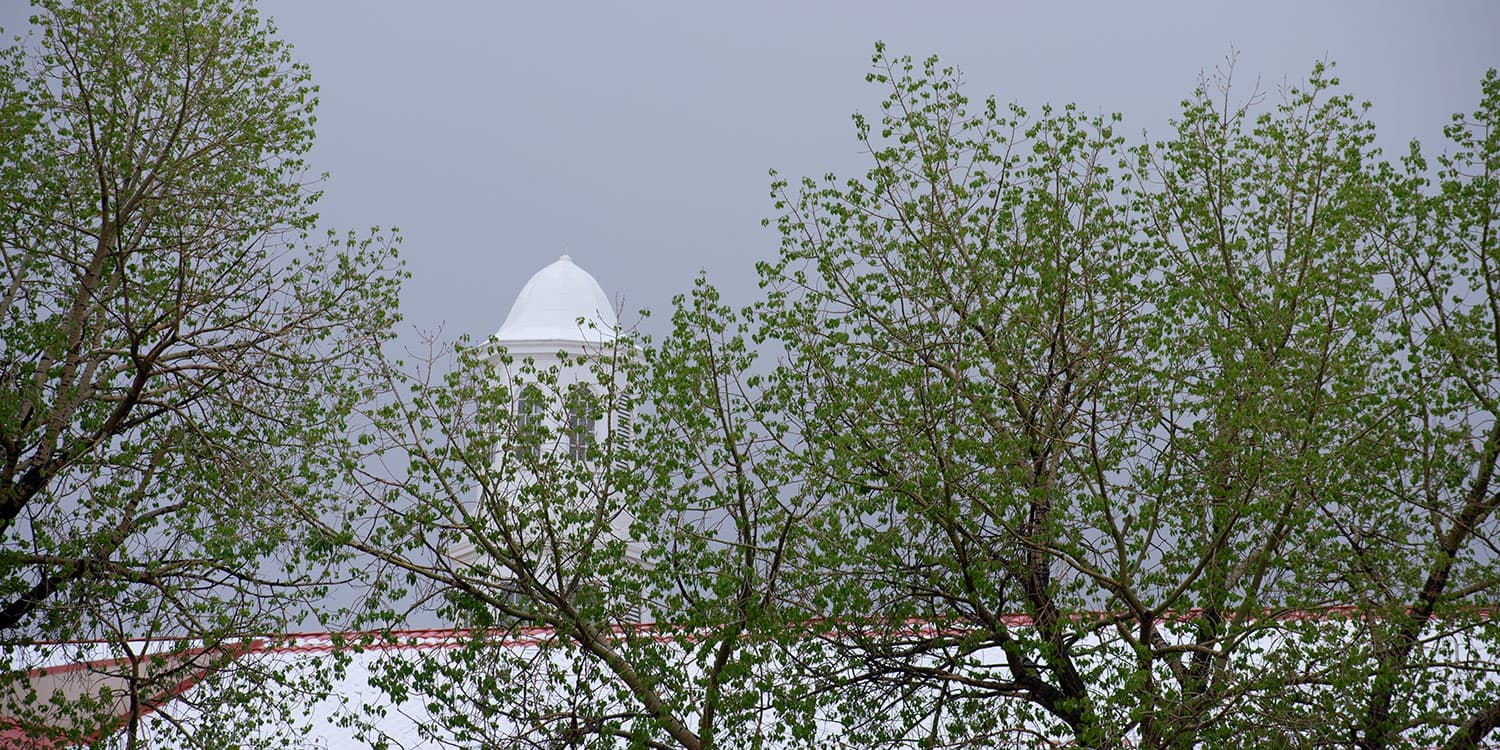Adams State University is paying homage to the Indigenous communities that once resided and are still living in the nearby areas of the University by adopting a Formal Land Acknowledgement Statement.
The statement also helps the Adams State community recognize the privilege it has to be part of the San Luis Valley and will help the institution continue to remember and to reflect on the rich history of the land on which the university resides.
The statement was developed by Matthew Valverde, D.M.A., associate professor of music and Inclusive Excellence liaison; the President’s Advisory Group on Equity (PAGE); and Associated Students and Faculty Presidents Mariah McDermott, Class of 2020, and Lathen Tsalate, Class of 2022.
The Statement was read in its entirety at the Spring 2021 Undergraduate Commencement Ceremony on May 8, 2021, by Tsalate, 2020/2021 AS&F president.
“The graduation ceremony is a memorable achievement for everyone in attendance and we embraced the opportunity to read the Statement; especially since it was the first big institutional event since the Statement was adopted,” Tsalate said. “When I read the Land Acknowledgement Statement, I think of the struggles and trials of the past peoples but I also think of our future Native and Indigenous peoples. Going to college is not an easy choice for students in Native and Indigenous communities today. I envision the Statement will give hope to Native and Indigenous Peoples who may have thoughts about attending college.

“As a Native person myself, creating this Statement made me excited for the future, saddened about the past, but mostly proud to know I was able to do this for myself and the future Native and Indigenous students who will attend Adams State University. I am so honored and thankful for everyone’s help and the entire institution for choosing to adopt this Land Acknowledgement Statement.”
Valverde brought the idea of creating a Land Acknowledgement Statement back to Adams State after attending a conference where a Land Acknowledgement Statement was read before every presentation. “I began working with Mariah, PAGE and Lathen to draft the language,” he says.
The Land Acknowledgement Statement will be prominently displayed throughout campus and has been translated into Spanish.
“It took over a year for this to happen. It is not one stroke of a pen but was developed through significant communication and outreach,” Valverde says.
Valverde said the Formal Land Acknowledgement Statement requires engagement and invites us to reflect. “It should always remain a living document and cause us to ask questions about how we came to this place and how to honor the land and its natural resources,” Valverde adds.
The Adams State Board of Trustees approved the Formal Land Acknowledgement Statement policy on April 14, 2021. The proclamation of the Formal Land Acknowledgement Statement and the adoption of this policy is part of the ongoing effort to promote inclusion, equity, cultural responsiveness, diversity and community engagement.
This required, shortened version of the Formal Land Acknowledgement Statement will be delivered at the beginning of public events held on campus:
We, the Adams State University community, gratefully acknowledge the Indigenous peoples on whose ancestral lands we gather. This beautiful San Luis Valley is sacred to many Indigenous nations, including the Utes, Jicarilla Apaches, Comanches, Kiowas, Arapahoe, Cheyenne, Navajo Nation, Pueblos, and all other First peoples who once made this valley their home. We honor the diverse communities that historically dwelled here and those who currently reside in the San Luis Valley. We know that honoring these lands is a reflective process that demands continued engagement and action. May we always remember the journey of the past peoples who called this valley: “Home.”
Español: Nosotros, la comunidad de Adams State University, reconocemos con gratitud a los pueblos indígenas en cuyas tierras ancestrales nos juntamos. Este hermoso Valle de San Luis es sagrado para diversas naciones indígenas, incluidos los Nuchu (Yutas), Pueblos, Abáachi (Apaches Jicarilla), Numunu (Comanches), Ka’igwu (Kiowas), Inuna-Ina (Arapajó), Tsistsistas (Cheyenes), Diné (Navajos) y todos los otros pueblos originarios que creaban un hogar en este valle. Honramos a la diversidad de comunidades que históricamente moraban aquí, y a aquellos que hoy en día viven en el Valle de San Luis. Sabemos que honrar a las tierras es un proceso reflexivo que demanda un continuo compromiso y acción. Sea que recordemos siempre el viaje de los antepasados que llamaban a este valle: “Hogar.”.



